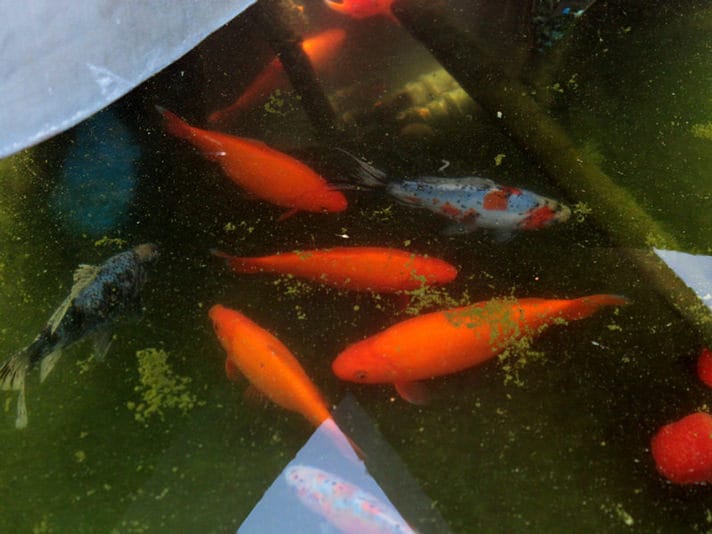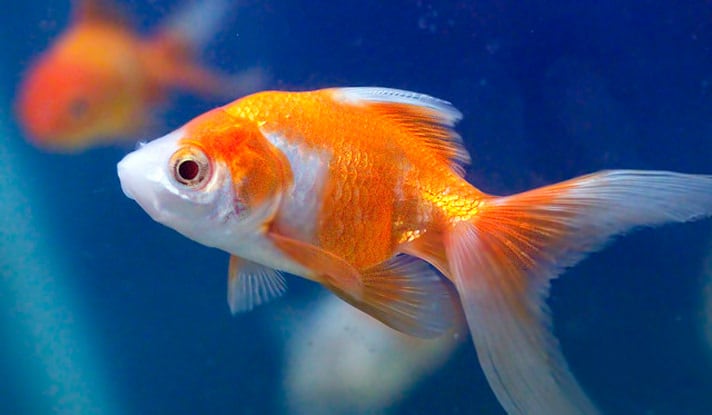Q.
Last summer, during the warmest days, I would go out to the pond each morning and find all of the goldfish at the surface of the water gasping for air. At any other time of the day the goldfish behaved normally. Is this a sign of a problem with the pond, and if so, what should I do about it?
A.
Fish gasping at the surface of the water is a sure sign of respiratory distress. For some reason the goldfish are not getting enough oxygen for normal respiration. There are a variety of potential causes for this problem, including ammonia or nitrite poisoning, some type of bacterial or parasitic infection of the gills, or simply insufficient oxygen in the water. There are others, but these are by far the most common.
One of the best diagnosis tools you have is the simple act of observation. In this case, your description of the problem holds an important clue: the fish only exhibit a respiratory problem in the morning.
Although you didn’t indicate if there have been problems with excess alage or “green” water in your pond, these are two causes of the problem you were seeing each morning. During the day, algae and other plants in the pond absorb carbon dioxide (a product of fish respiration) and release oxygen back into the water via a process we all know as photosynthesis. At night, the process is reversed, and plants take in oxygen while giving off carbon dioxide — just as fish do when they respire.
By early morning the dissolved oxygen levels in the pond water may be so low that the fish cannot breathe normally, so they stay at the surface where the oxygen content is higher because the water is in contact with the air. As the pond becomes exposed to sunlight during the day, the plants switch to photosynthesis and begin adding oxygen back into the water again. Dissolved oxygen levels rise and the fish can breath normally once again.
The problem becomes particularly severe when the days are quite warm and the air temperature remains high at night — summertime. This is because water cannot hold as much dissolved oxygen as the temperature of the water goes up. Indeed, as the table shown below shows, as the water temperature rises from 70 to 80 degrees Fahrenheit, the maximum amount of dissolved oxygen the water can hold drops from 8.9 parts per million (ppm) to 8.0 ppm. This may not seem significant until you realize that standing water without any kind of supplemental aeration holds only 60 percent of the absolute maximum amount of dissolved oxygen that water can contain at any given temperature.
Thus, the dissolved oxygen content of the water has dropped from 5.3 ppm at 70 degrees Fahrenheit to 4.8 ppm at 80 degrees. Goldfish (and koi) require at least 5.0 ppm of dissolved oxygen for normal breathing while at rest. The likely amount of dissolved oxygen at 80 degrees is already dangerously low. An overabundance of algae can drop oxygen levels to below 3.0 ppm during the early morning hours.
This is obviously a serious problem that requires your attention. The stress of low oxygen levels will eventually weaken the fish and make them much more vulnerable to disease and to parasites. Large fish, with their greater mass, will suffer more than small fish. There will be sporadic fish deaths as a result. Goldfish can easily live for well over 10 years — often up to 20 years — so this is particularly tragic.
You can greatly alter this situation by mechanically aerating the pond water on a continuous basis, at least during the warm months, but, ideally, all year round (assuming the pond is in operation during Arizona winters). The simplest and most aesthetically pleasing way to accomplish this is to circulate the pond water over a cascading waterfall. This type of waterfall consists of a series of steps over which the water flows. The more steps there are, the greater the aeration. It also helps to have the volume of the pond recirculate at least once per hour.
An alternative to the waterfall is a spray fountain. Or you could install a jacuzzi aerating jet — available at any swimming pool store for less than $20. The jet is installed on the output side of the water pump.
You may also want to reduce the amount of algae in the water. Algae is a normal part of any aquatic ecosystem, but given the unusually high nutrient levels in ornamental (as opposed to natural) ponds, the added combination of warm water and sunlight will trigger significantly more algae growth than would normally be the case. Harvesting this algae will help maintain higher levels of dissolved oxygen in the pond water and reduce the magnitude of the fluctuations of oxygen content over the course of the day.
Posted By: Chewy Editorial
Featured Image: Via Emilian Robert Vicol/Flickr
Share:









